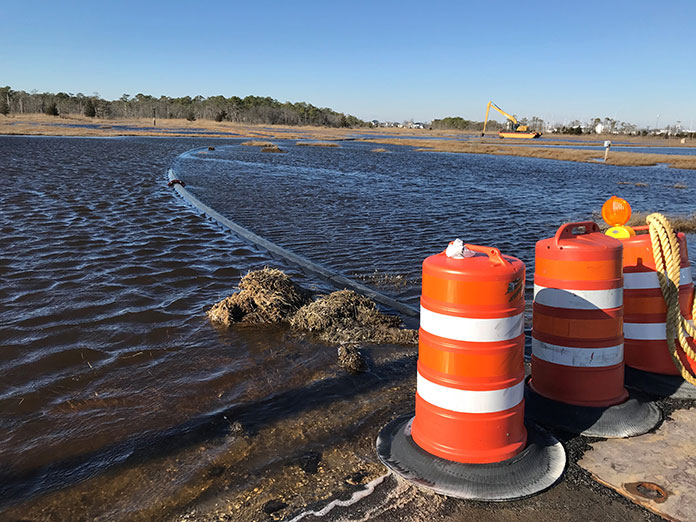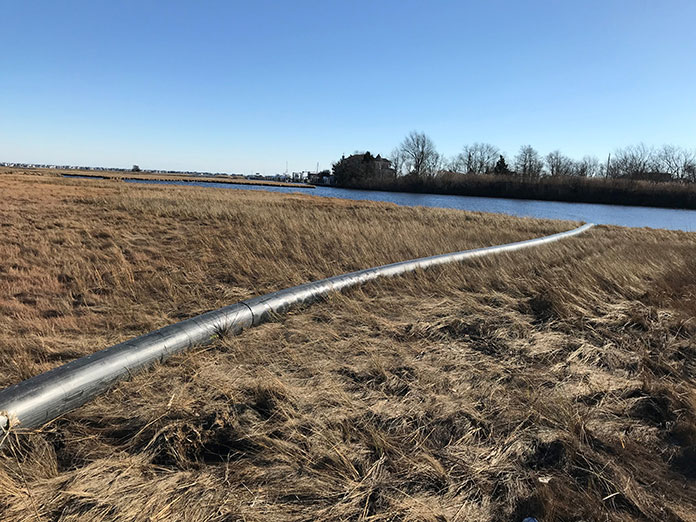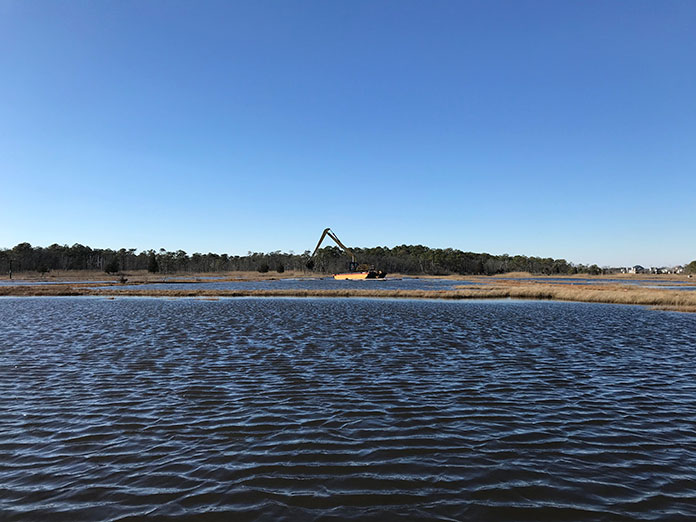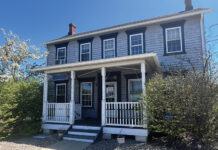
BERKELEY – A dredging project is not only opening up channels for boaters but working to preserve salt marshes nearby.
Boaters in the Berkeley Shores area have noticed for years that the channels were becoming difficult to navigate. The neighborhoods out there had man-made lagoons, and nature is hard to control. Erosion would cause the waterways to fill in and expensive maintenance dredging would be done.
But what do you do with the material you dredge up?
A solution to this was to place a thin layer of it back over nearby areas. That way, it builds up natural habitat without smothering it in dredged material.
The New Jersey Department of Transportation’s $2.1 million project dredged approximately 16,000 cubic yards of sediment, said Steve Schapiro, Deputy Director of Communications for the NJDOT. The dredge is removing material from four State navigation channels: Good Luck Point Channel, Berkeley Shores Channel, Berkeley Shores North Channel, and Berkeley Shores Channel Spur.

“Sand from these channels is being beneficially used to augment a natural beach adjacent to the Forsythe Wildlife Refuge on Good Luck Point and restore the marsh opposite Good Luck Point Marina. This is being done in cooperation with the US Fish and Wildlife Service as part of a larger restoration project in the Good Luck Pont marsh. Using dredged material in this way is beneficial and consistent with NJDEP policy to keep dredged material in the ecosystem and to place it strategically to improve coastal resiliency in the face of sea level rise,” he said.
“The channels that are being dredged have both sand and finer silt material,” said Dr. Joseph Smith, Wildlife Biologist for the Edwin B. Forsythe National Wildlife Refuge. “The sand is being placed at Good Luck Point along about 1,200 feet of the northern, east facing shoreline. This will expand the beach and help it resist erosion from waves coming across the bay.”
The silty component will be placed in a deteriorating salt marsh on the west side of Bayview Avenue that is owned by the Forsythe Refuge, he said.
“Over the last few decades, the vegetated area of the marsh has been shrinking while interior ponds have been expanding. The material will be used to bring the elevation up in these ponded areas so that vegetation can grow again,” he said.
“This is an important area for a declining bird species, the saltmarsh sparrow. They occur only in salt marshes along the east coast and New Jersey has more of these sparrows than anywhere else in the world. They nest in marsh grass in the highest, least frequently flooded part of the marsh. Our goal with the project is to create more of the habitat that they need at this site,” Smith said.
A hydraulic dredge was bringing up the material. A pipe carried the material to Good Luck Point and the marsh on Bayview Avenue. This is the long road that loops around the marsh, past the old AT&T building.
William McGrath, a local resident who is on the volunteer Waterways Advisory Committee, said the erosion in Berkeley is significant. Berkeley Township features 78.3 miles of coastline of which 31% (24.6 miles) consist of salt marsh habitat. Between 1986 and 2012, approximately 187 acres have been lost in Berkeley Township due to erosion and other impacts, according to The Nature Conservancy’s report to the Berkeley Township Waterways Commission.

“The salt marsh acreage is important because salt marsh extracts the nitrogen pollutants from Barnegat Bay,” he said. “Salt marshes provide a wealth of services, referred to as ecosystem services that make them extremely valuable habitats to conserve. Salt marshes serve as nursery habitats for a variety of marine life, including more than 75 percent of fishery species. Wading birds feed in these productive habitats while migratory birds use salt marshes as stopping points on their routes.”
Salt marshes also serve as a buffer to protect against coastal storm surges, he said. They are one factor to help bring down flood insurance premiums for nearby homes.
The distribution of the dredge materials is called “thin layer deposition.” This pilot project has only recently been done in only a few places in our state, he said.
“This is a unique and innovative way to utilize the dredge spoils to preserve and restore the environment. This $2 million project was completely funded by the State of New Jersey, and originated from several meetings Mayor Carmen Amato and our Waterways Commission had with the N.J. Department of Transportation back in September of 2019,” he said.
According to a message put out by the Coast Guard, H&L Contracting was doing the work.






